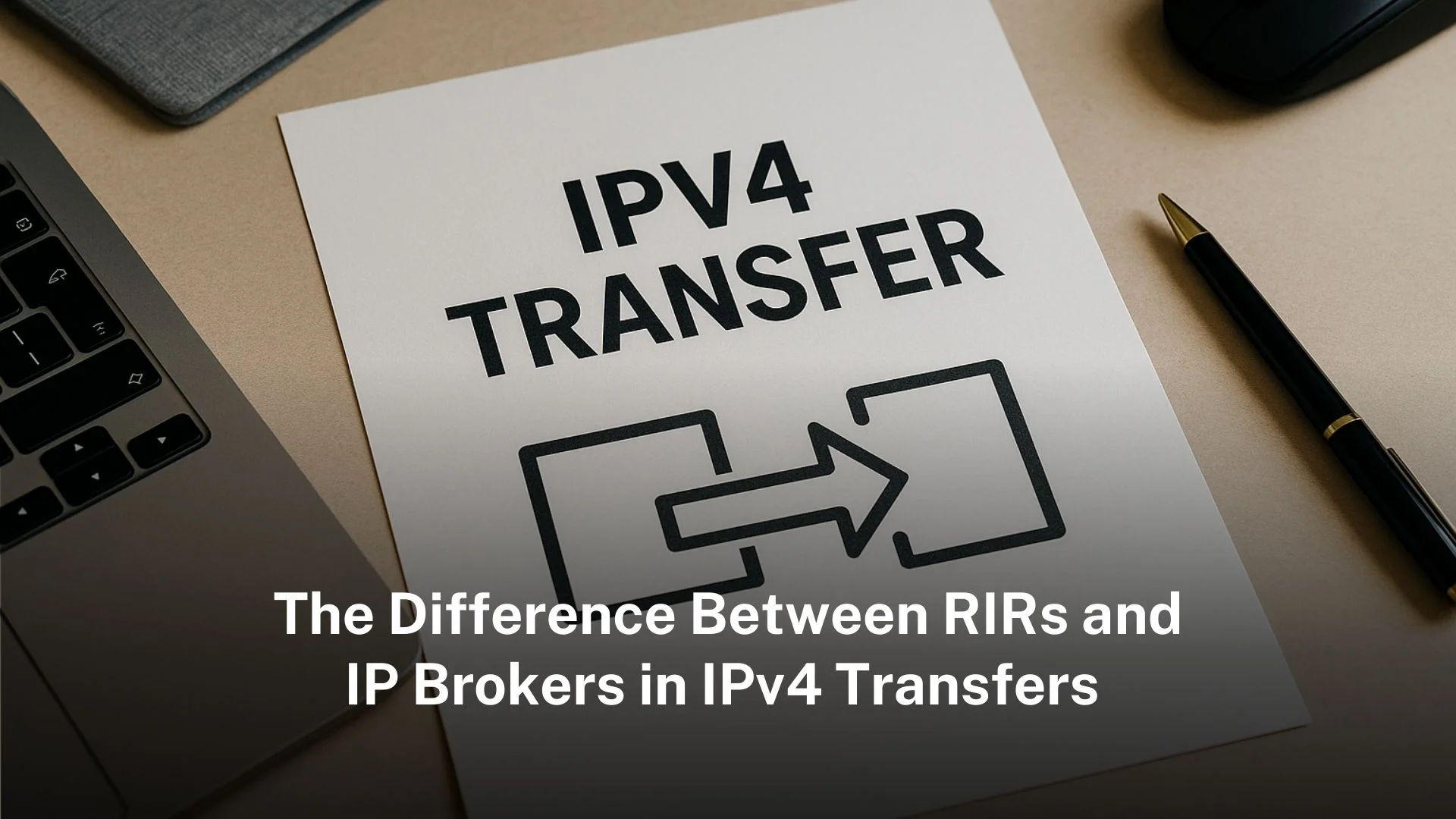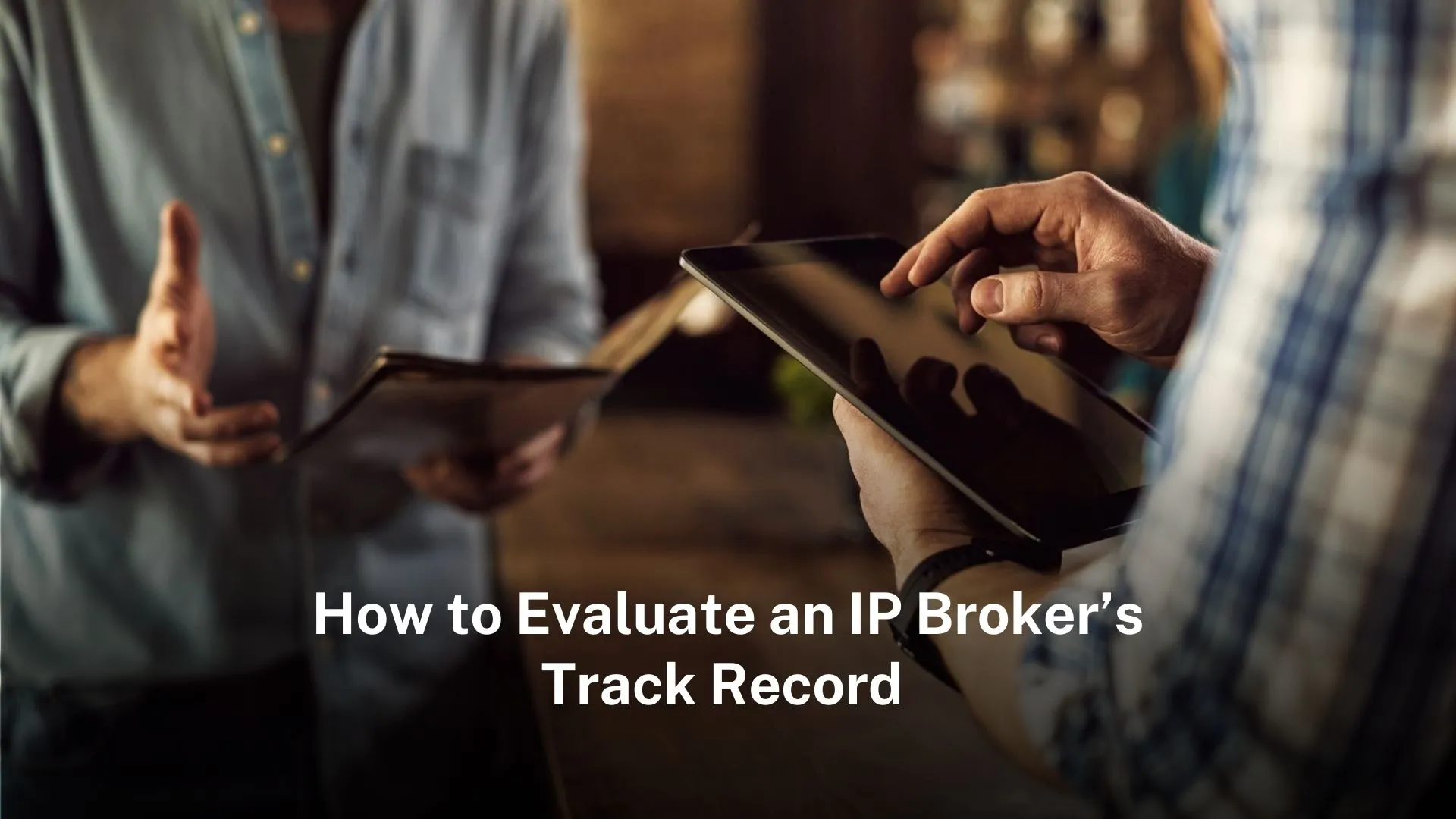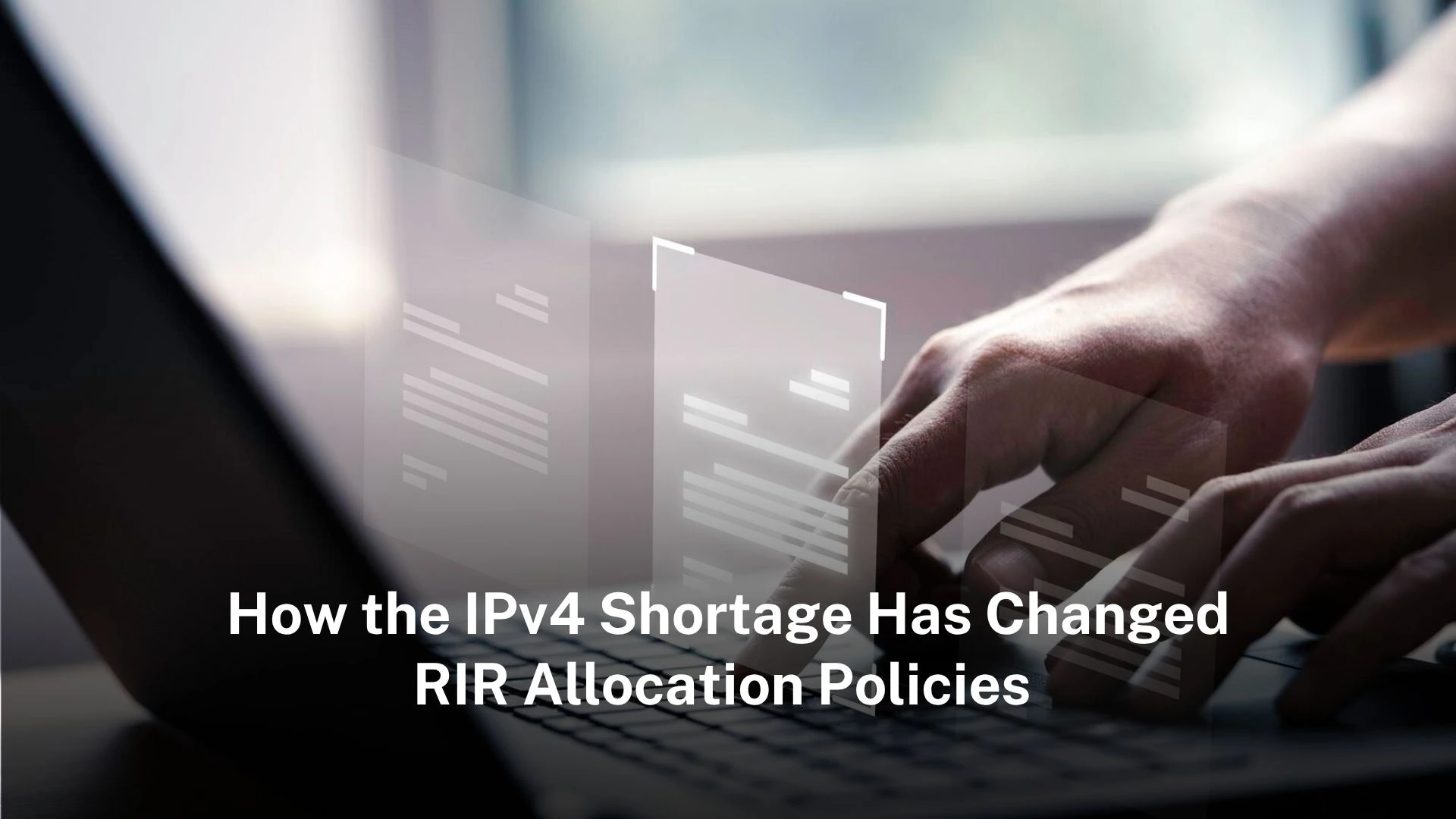Blog

Table of Contents Toggle IntroductionRegional internet registries govern ownership transfersDirect transactions: pros and consAn increasingly precious resourceRegional Internet Registries: the guardians of allocationIP brokers: intermediaries simplifying complexity“An IPv4 broker acts as an intermediary between buyers and sellers, ensuring a compliant, successful transaction every time.”Leasing IPv4: a flexible alternativeA shortage that
Go ahead

1. Understand the role of an IP address broker Table of Contents Toggle 1. Understand the role of an IP address broker2. Assess experience and reputation3. Compliance assurance: Core competence of IP brokers4. Evaluate financial stability and transparency4.1 Financial stability4.2 Transparency5. Analyse past success and case studies6. Consider post-transaction support
Go ahead

Get IP addresses has become an increasingly difficult endeavour in the digital world of today, especially when IPv4 addresses are running low. Industries looking for opportunities to expand their network infrastructure constantly must negotiate an intricate framework of legal, regulatory, and technological challenges. Table of Contents Toggle Understanding the Role
Go ahead

As RIRs tighten control over IPv4 transfers, the market is shifting. Brokers simplify compliance, while leasing solutions like i.lease offer an agile alternative to traditional ownership. Table of Contents Toggle IntroductionRegional internet registries govern ownership transfersDirect transactions: pros and consAn increasingly precious resourceRegional Internet Registries: the guardians of allocationIP brokers:
Go ahead

RIRs transitioned to strict “soft‑landing” policies and limited final allocations to prevent hoarding and extend IPv4 availability. Transfer markets, wait‑lists, and equitable distribution mechanisms now dominate scarcity-era policy landscapes. The impact of IPv4 exhaustion on RIR policy The depletion of IPv4 address space prompted all Regional Internet Registries (RIRs) to
Go ahead
